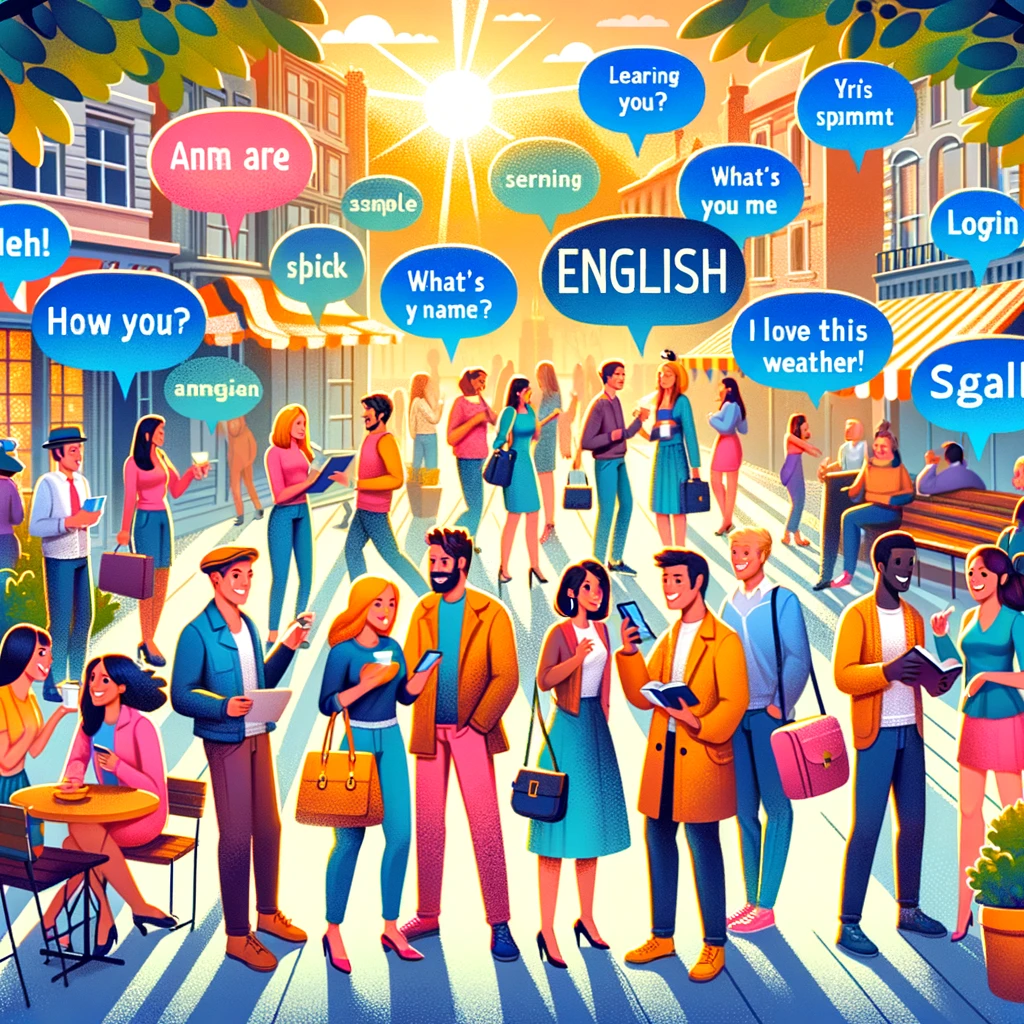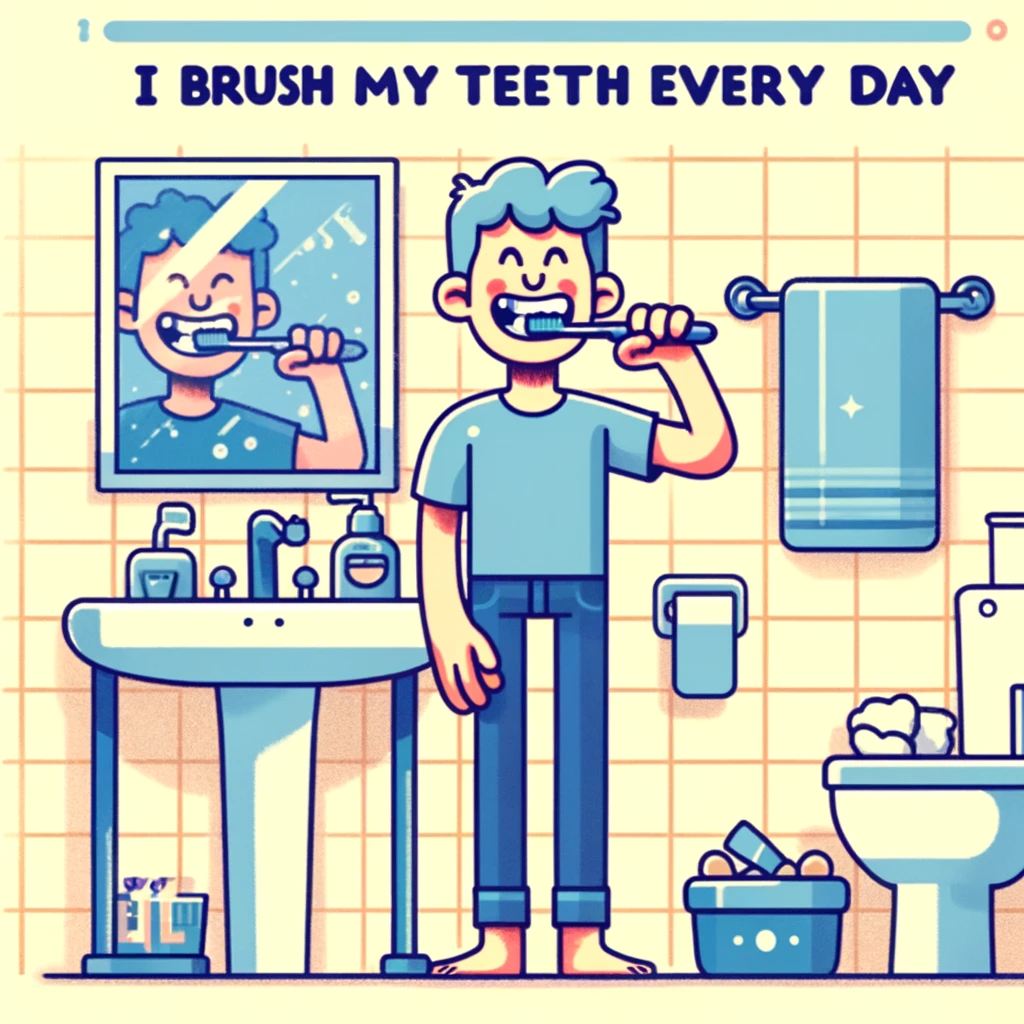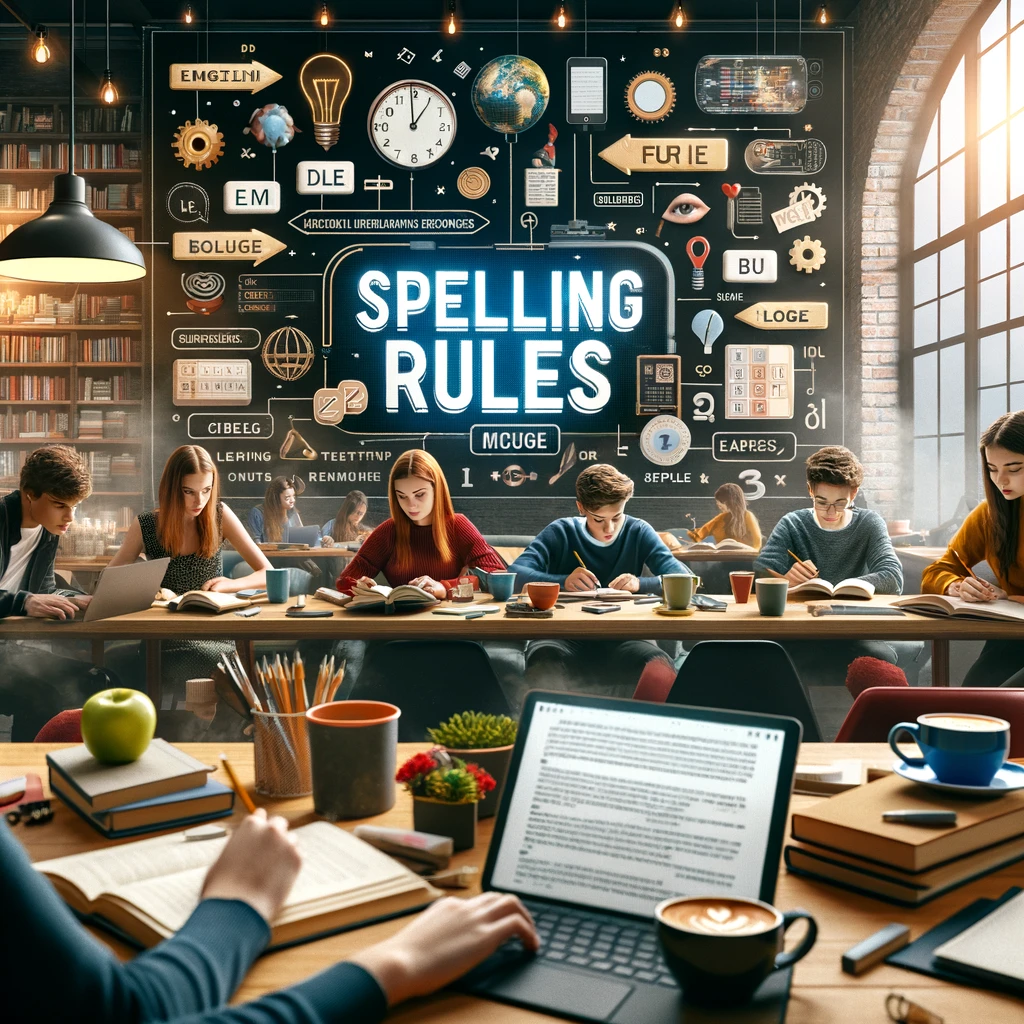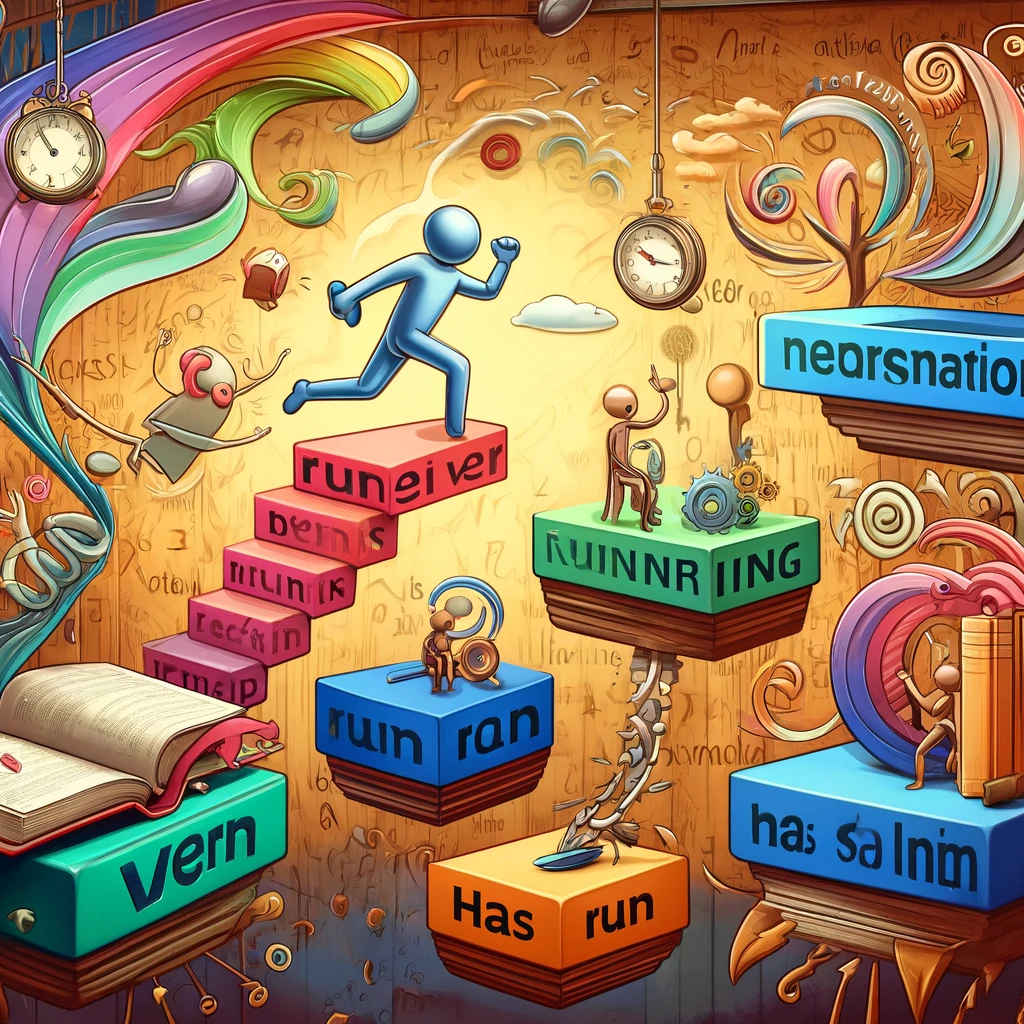
LEARNING GOALS
- Understand the basic rules and structures of each present tense, including when to use them and how they differ from one another.
- Address common errors and misconceptions regarding the use of present tenses, such as incorrect verb conjugations or confusion between different tenses.
- Be able to introduce and practice vocabulary associated with each present tense to help you express more accurately and fluently.

PRESENT TENSES
The present tenses in English encompass four main aspects, each used to express different types of actions or states occurring in the present time. Below you will find a short summary of each tense.
Present Simple
Used for habitual actions, routines, general truths, unchanging situations and facts. It reflects actions that are regular or unchanging.
Examples:
- “She studies every evening.”(routine)
- I work in London. (unchanging situtaion)
- I drink coffee every morning. (habit)
- London is a large city (general truth)
To give instructions or directions:
- You walk for four hundred meters, then you turn right.
To express fixed arrangements, present or future:
- Your class starts at 10.00
To express future time, after some conjunctions: after, when, before, as soon as, until:
- I’ll give the keys to you when you come next Saturday.
To form the Present Simple tense, use the following formula:
Subject + Base Form of Verb

Present Continuous
Describes actions happening at the moment of speaking or current temporary situations. It’s also used for future plans or arrangements.
To form the Present Continuous tense, use the following formula:
to be [am, is, are] + verb [present participle]
Examples:
- They are watching a movie now.
- More and more people are becoming vegan.
To describe an action or event in the future, which has already been planned or prepared
- I’m meeting my father tonight.

Present Perfect
This tense connects past actions to the present moment, emphasizing the result or consequence of an action that has occurred at an unspecified time before now.
To form the Present Perfect tense, use the following formula:
Subject + have/has + past participle of the verb
Example: I have finished my homework.
She has eaten dinner twice.
Actions started in the past and continuing in the present:
- They haven’t worked there for years.
- She has worked in the bakery for eleven years.
- Have you played the guitar since you were a child?
When the time period referred to has not finished:
- I have worked out hard this week.
- It has snowed a lot this year.
- We haven’t talked with her today.
Actions repeated in an unspecified period between the past and now:
- They have watched that movie ten times.
- It has happened several times already.
- She has visited her boyfrind frequently.
Actions completed in the very recent past (+just)
- I have just eaten pizza.
- We have just seen her in her wedding.
- Has he just left the room?
When the precise time of the action is not important or not known
- Someone has eaten my soup!
- Have you seen ‘Titanic’?
- She’s studied Italian and Spanish.

Present Perfect Continuous
Focuses on the duration of an ongoing action that started in the past and continues into the present. It highlights the continuity of the action.
Example: He has been waiting for you all day.
I have been working in this project since March.
Actions that just have finished, but we are interested in the results
It has been raining.
To form the Present Perfect Continuous tense, use the following formula:
S + has/have been + [present participle (root form of verb + -ing)].
“He has been reading for two hours.”

Here is a presentation with all the tenses and examples. Check it out!

Check out this chart to use proper spelling when transforming verbs in the Present Tenses
Learning activities
Tense Transformation Challenge
Objectives
Strengthen understanding of the structure and use of various present tenses in English.
Enhance ability to identify and correct verb tenses in given sentences.
Improve grammatical accuracy and fluency in writing and speaking by focusing on tense transformation.
Materials Needed
Handouts with Sentences: you will receive prepared sentences in past and future tenses that you will have to transform into the target present tense.
Writing Tools: Google doc
Sentences for Transformation:
-“I visited my grandparents last weekend.”
-“She will travel to New York next month.”
-“They were eating dinner when you called.”
-“I had finished the project before the deadline.”
-“We will be staying at a hotel during the vacation.”
-“She was going to the market every Sunday.”
-“I had been studying English for five years.”
-“They will have completed the course by tomorrow.”
-“They were planning to attend the concert next week.”
-“He studied French when he was in high school.”

Video Diary Project
Objectives
Enhance Verbal Fluency: Improve your spoken English fluency by describing routines, plans, and experiences in video format.
Apply Present Tenses: Practice and demonstrate the use of present simple, present continuous, present perfect, and present perfect continuous tenses in authentic contexts.
Creative Expression: Encourage creativity and personal expression through the medium of video, allowing you to share aspects of your lives.
Listening and Analytical Skills: Develop listening skills and the ability to analyze peers’ use of present tenses through peer review.
Materials Needed
-Smartphones or Tablets
-Video Editing Apps (optional): Apps like iMovie, InShot, or ClipChamp for students who wish to edit their videos.
Project Description: Create a short video diary (2-5 minutes) discussing the following topics, applying different present tenses:
–Daily Routines (Present Simple): Talk about your typical day. Example: “I wake up at 7 am, then I have breakfast.”
–Future Plans for the Day (Present Continuous for future arrangements): Mention something you plan to do later today. Example: “I am meeting my friends after school.”
–A Recent Experience (Present Perfect): Describe something interesting that happened recently. Example: “I have just finished a great book.”
–An Ongoing Experience (Present Perfect Continuous): Discuss something you’ve been doing for a while now. Example: “I have been learning guitar for three months.”

Present Tense Escape Room
Objectives:
With this activity you will solidify understanding of the present simple, present continuous, present perfect, and present perfect continuous tenses.
You will use critical thinking and problem-solving skills to decipher clues related to present tenses.
Apply present tense knowledge in simulated real-life scenarios, enhancing practical language use.
Activity Description
You will have to solve some everyday scenarios where present tenses are prominently used. Each puzzle station or digital stage is designed to test your knowledge and application of a specific present tense.
Link for the activity: https://view.genial.ly/63309df2c3ba5c0017f5d81d/interactive-content-present-tenses-factory-escape-game

Review activity
“The Time Travel Talk Show”
In this activity, you and your classmates role-play as characters from various times and scenarios, appearing as guests on a fictional talk show. Each character’s story and situation require the use of specific present tenses, allowing you to creatively apply present simple, present continuous, present perfect, and present perfect continuous tenses in your speech. Hosted either by any of your classmates or you acting as the talk show host, the activity involves interviewing these “time-traveling” guests, encouraging them to describe their lives, achievements, and experiences using the appropriate tense.
Objectives:
- Reinforce Present Tenses: Practice and reinforce the correct use of present simple, present continuous, present perfect, and present perfect continuous tenses.
- Boost Speaking Fluency: Increase your confidence and fluency in speaking through a fun and imaginative role-play scenario.
- Enhance Listening Skills: Improve listening comprehension as you pay attention to your classmates’ use of different present tenses.
- Encourage Creativity: Stimulate creativity by allowing you to invent and explore various characters and scenarios.
Materials Needed:
- Role cards with character scenarios that require the use of different present tenses.
- A “talk show” setup area in the classroom (optional).
Instructions:
- Introduction (5 minutes):
- You will role-play as guests from different times and situations, using specific present tense forms based on their role card.
- Role Card Distribution (5 minutes):
- Some role cards will be distributed randomly among you and your classmates. You’ll have a few minutes to read your role and think about how you will present your characters.
- Talk Show Begins (20-30 minutes):
- There will be a talk show host yourself. The host introduces the talk show and its unique “time-traveling” theme.
- Invite “guests” (students) to come up one at a time to be interviewed. Fully embrace their characters, using the appropriate present tense forms to answer questions and discuss their scenarios.
- The host should prepare questions that elicit the use of various present tenses, but also allow students to ask questions to each other in character.
Example Questions for the Host:
- For present simple: “What does your character usually do in their time period?”
- For present continuous: “What exciting project or event is your character currently involved in?”
- For present perfect: “What significant achievements has your character accomplished so far?”
- For present perfect continuous: “How long has your character been engaged in their current activity or mission?”

